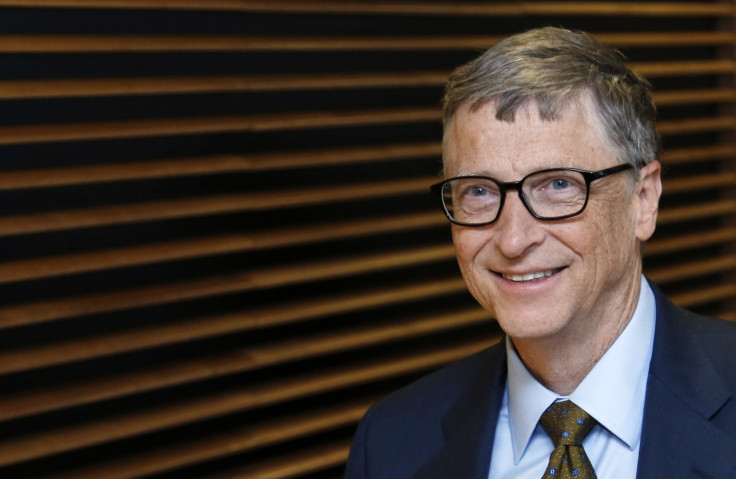Davos: Oxfam is ignoring the fact that the world's poor are getting richer

Every year before the World Economic Forum Oxfam releases its measure of wealth inequality as a counterpoint to the gathering of political bigwigs, billionaires, top journalists and economists in Davos. Every year, it is widely covered across every form of media. And every year it suffers from three crucial problems: statistical niggles; a misleading message; and a questionable conclusion.
Oxfam compiles its figures from two fairly credible sources, merged together: Forbes's top 500 rich list, and Credit Suisse's household wealth survey. It looks at the net wealth position of households across the world: their measured assets set against their measured liabilities. For many uses—such as totting up the total assets of an entire nation—net wealth is appropriate. But for this particular use, it has a number of quirks.
Oxfam says that the top 62 wealthiest have as much as the bottom-half put together, but they don't mention that anyone has as much as the bottom 2bn put together—unless they are a negative trillionaire—because those people have negative wealth and when you add up negative numbers they get smaller. In fact, the poorest person in the world, whatever their negative net wealth, has more than the next 2bn richer than him put together by Oxfam's figures.
It also fails to consider human capital. Now this may not be a huge issue in many countries, but in the West, one of the main things someone 'owns' is their talents and abilities, enhanced by education. When you have just graduated from Harvard, you may owe $200,000 in student debts, but you have something worth much more—not considered in the figures—that will enable you to earn far in excess of that debt over your lifetime. In rich countries, highly and over-indebted households tend to be young and middle class, according to the OECD. This is why the USA accounts for more of the world's poorest tenth than China, a country with vastly poorer living standards.
However, these statistical issues, like the fact that Oxfam uses market exchange rates and hence allows forex movements to drive much of the year-on-year changes, are really minor niggles. Fixing them, or trying to get around them, would not change the Oxfam picture radically on their own terms. The crucial issue is that Oxfam's data tells the wrong story: the world's poor are getting richer.
Extreme poverty is falling: at purchasing power parity, the proportion of the world surviving on less than $2/day has fallen from 69.6% in 1981 to 43% in 2008. Even excluding China, it's fallen from 59.3% to 47%. And even focusing on just Sub-Saharan Africa it has fallen, though much less impressively, from 72.2% to 69.2%. The number on $1/day or less has seen similar falls, despite a Sub-Saharan African population explosion which shows no signs of stopping.
One way of visualising this is imagining the world as one hundred people, numbered from 1, the poorest, to 100, the richest, and look at how their incomes changed in real terms between 1988 and 2011. Numbers 5 to 75—all in the developing world—would have seen their incomes rise by around a half, with some in the middle enjoying a doubling. By contrast, the top fifth—the developed world—enjoyed meagre gains, except of course for the 1%, who've had a roaring time. But this top 60m or 70m are the upper middle classes of rich countries, not billionaire plutocrats.
But Oxfam might respond that they agree with everything I've said: if only wealth was distributed more equally, then things would improve even more for the world's poor. Their paper argues that global wealth inequality leads to institutional problems and corruption that mean less wealth is actually created, especially for the poor.
This is the third problem. They give far too little attention to a plausible mechanism by which the riches of Bill Gates, Warren Buffett, or the Waltons, could make the world's poor poorer (or less rich than they could have been). Even assuming none of these people gave away any of their money to good causes, most of them got rich by bettering the lives of millions with improved products and most of them stay rich by investing their money: putting it into projects which raise society's productivity and hence living standards.
And in practice we don't see much evidence of Western billionaires meddling in poor countries' institutions or damaging their human capital. The example Oxfam focuses on in its report—pharmaceutical lobbying—looks at lobbying in the US and EU, rather than activities affecting developing countries. And there is no reason, in the first place, to believe that firms with wealthier owners do more lobbying. If Oxfam wanted to identify a link between wealth and policy they ought to follow political activities by the wealthy themselves, not firms they have stakes in. However, the results in the empirical academic literature tend to find little link between money and political outcomes.
While we might lament that solving developing world poverty seems such a slow and difficult task, we shouldn't omit the fact that we're going in the right direction. Oxfam's data is misleading, beset with statistical niggles, and comes with the wrong conclusion. Let's hope the bigwigs at Davos don't take it too seriously.
Ben Southwood is Head of Research at the Adam Smith Institute
© Copyright IBTimes 2025. All rights reserved.






















